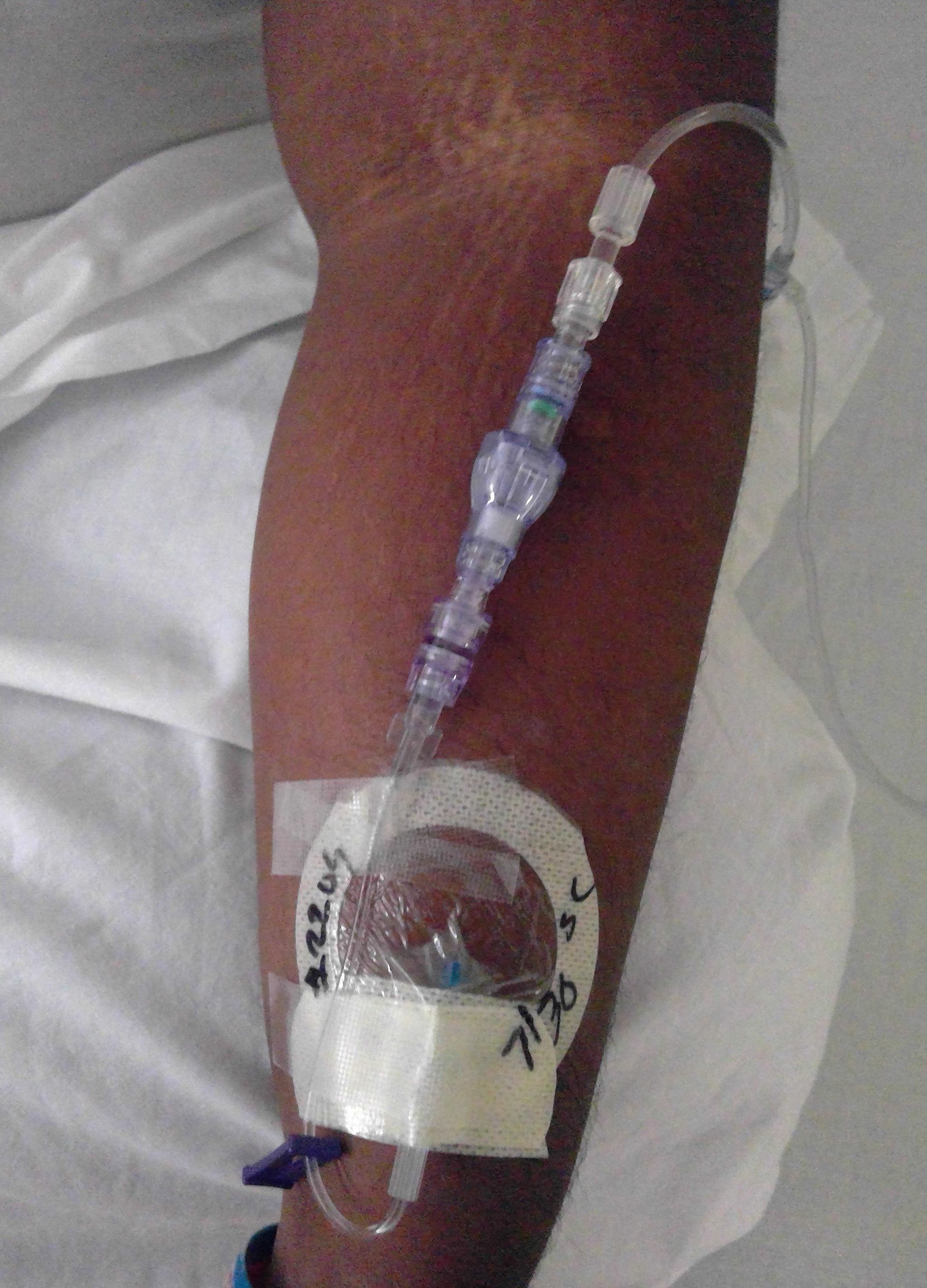
CLINICAL EVIDENCE
D.I.P.P.E.R. STUDY - Randomized Controlled Trial
Dislodgement, Infiltration, Phlebitis Prevention Eliminating Restarts
In 2021, Lineus completed a randomized controlled trial (RCT) at Hartford Hospital in Hartford, CT. This 287 patient study was focused on showing SafeBreak’s impact on infiltration, phlebitis and dislodgement.
The control group (N=144) in this study received the standard of care, while the experimental group (N=143) had SafeBreak Vascular placed on their peripheral IV line for the duration of their enrollment. Multiple Med/Surg units and ICU Step Down units were included in the study. All IV complications, SafeBreak separations, delays in therapy, and adverse events were tracked, as well as a host of other data points.
The primary endpoint of the study was to determine if the use of SafeBreak had an impact on PIV catheter mechanical complication rates (dislodgement, infiltration, and phlebitis) when compared to a control group receiving the standard of care. Lee Steere, RN, CRNI, VA-BC was the principal investigator of the study.
DIPPER Study Results
This randomized, controlled study demonstrated that the use of SafeBreak decreased the rate of overall mechanical complications requiring an IV restart and did not increase adverse events in patients receiving infusions via PIV catheter. Specifically, SafeBreak showed a statistically significant reduction in phlebitis, dislodgement, and infiltration. The control group had an IV complication rate of 26.5%, while the SafeBreak group had an IV complication rate of 15%. This represents a 44% reduction in overall IV complications. The randomized clinical study proved that the separation force of SafeBreak Vascular is effective in reducing the overall IV complication rates as well as reductions in individual complications when comparing the control group to the SafeBreak group.
Microbial Ingress Study
This study is a review of bench-top and clinical studies demonstrating effectiveness of recessed valves in SafeBreak Vascular in preventing microbial ingress. The purpose of recessed valves is two-fold. The first objective is to eliminate both wasted medication and to prevent the clean ups that come from spilled medication and blood. Secondly, the recessed valves provide a barrier to inhibit bacteria from passing into the IV line and potentially causing infection. The results of the microbial ingress testing demonstrated that SafeBreak Vascular acts as an effective barrier to multiple, microbial contamination events.
Barnes- Jewish Study
In this prospective, non-randomized study, the study group had an overall IV complication rate of 26.2%. When compared to prospective randomized peripheral IV catheter studies in clinical literature, the study group had lower complications rates for every mechanical complication, though this study was not powered to prove a statistically significant reduction in these mechanical complications. This study included the use of SafeBreak on all types of IVs placed in the patient: peripheral, PICC and Central lines.
Ripple Effect Study
Analysis of the cascade of events associated with peripheral IV loss due to IV dislodgement and the impact on nurse workflow and resource utilization. The primary objective of this study was to characterize and evaluate all the costs of an IV dislodgement in a general medical hospital. A questionnaire was utilized to determine patient demographics, causes of dislodgement, disruption of care, expense of dislodgement cleanup, and the expense of establishing a replacement IV for 51 sequential patients experiencing IV dislodgement over a three- week period.
Securement Pull Force Study
Patient in the control group without SafeBreak on their IV line
Patient in the expiermental group with SafeBreak on their IV line
Performance testing of peripheral IV securement in a clinically simulated environment. Proper catheter function relies on numerous infusion components working together simultaneously. Mechanical IV complications (dislodgement, infiltration, occlusion, and phlebitis) can arise when one or more of these infusion components are impacted by external forces. The purpose of this study was to closely analyze how tension on an IV line impacts catheter function by understanding the nature of infusion component failure during simulated pull force scenarios.
MKG-0078 REV 02


